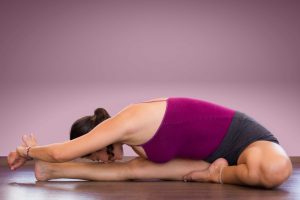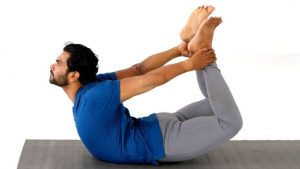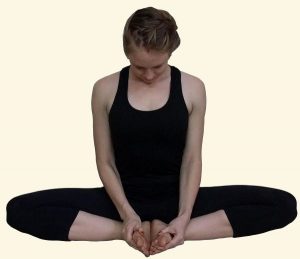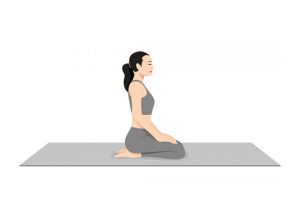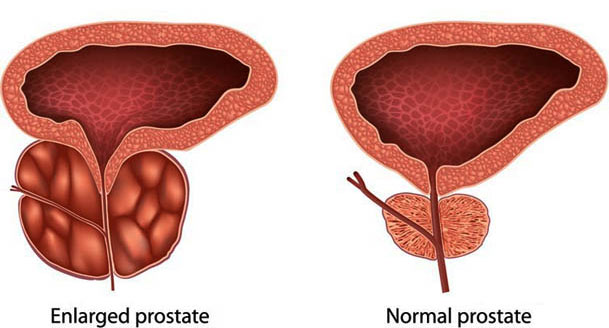
BENIGN PROSTATIC HYPERPLASIA – YOGA ASANAS
- January 30, 2023
- Posted by Dr. Vaidya Karanvir Singh
- 0 Comment(s)
Table of Contents
INTRODUCTION
Benign prostatic hyperplasia is the enlargement of prostate gland in males. It is a very common problem in older men. Prostate gland is a male accessory gland which is present below the urinary bladder surrounding urethra. It is the size of a walnut and helps in formation of semen which contains sperms. As a man gets older, the size of prostate gland increases and thus presses the urethra. This leads to blocking the flow of urine out of the urinary bladder. Difficulty in urination, dribbling of urine and urgent need to pass urine are some of the common symptoms of benign prostatic hyperplasia.
Treatment of benign prostatic hyperplasia includes some medications, minimal invasive procedures and surgery. However, yoga is found to be very beneficial for the management of benign prostatic hyperplasia.
WHAT ARE THE CAUSES OF BENIGN PROSTATIC HYPERPLASIA?
The exact reason for the occurrence of increase in size of prostate gland is not known. But it is believed to be due to the imbalance of male sex hormones such as testosterone. Prostate gland is present below the urinary bladder. A tube called urethra carries urine from the urinary bladder. It passes through the center of the prostate gland. When the prostate gland enlarges, it blocks the flow of urine, thereby causes various urinary symptoms.
RISK FACTORS RELATED TO BENIGN PROSTATIC HYPERPLASIA
Some factors increase the risk of a person developing enlarged prostate. Following are the risk factors:
- Increasing age, above 40 years
- Having a family history of benign prostatic hyperplasia such as father or brother
- Suffering from diabetes
- Heart problems
- Sedentary lifestyle
- Lack of physical exercise
WHAT ARE THE SYMPTOMS OF BENIGN PROSTATIC HYPERPLASIA?
In the early stages, the symptoms are not noticeable but they gradually appear with time. The severity of symptoms varies from person to person. Following are the common signs and symptoms of the disease:
- Urgency to urinate
- Increased frequency of urination especially at night
- Difficulty in urination
- Weak stream of urine
- Dribbling of urine
- Inability to empty the urinary bladder
- Presence of blood in urine
- Urinary tract infection
- Narrowing of urethra – urethral stricture
- Inflammation of the prostate gland called prostatitis
- Presence of kidney stones
- Change in color of urine
- Foul odor in urine
- Problem in nerves which control urinary bladder
- Cancer of the prostate gland
- Cancer of urinary bladder
YOGA FOR BENIGN PROSTATIC HYPERPLASIA
Yoga is an ancient yogic practice which relaxes both mind and body. There are various types of yoga asanas which are very helpful in stretching and increasing flexibility of different body parts. It helps in increasing blood flow to the body organs and thus helps in keeping body healthy. It calms mind and relaxes nerves. Yoga can be very beneficial in prevention and managing the problem of benign prostatic hyperplasia.
Here are few yogic asanas which are effective in benign prostatic hyperplasia:
1. JANUSHIRSHASANA
Janu means knee and shirsha means head. Janushirshasana means head touching knee posture. The asana shouldbe performed empty stomach.
How to do it:
- Sit with legs stretched out in front, keep the spine erect.
- Bend the left knee and place the left foot against the right thigh, the left knee is on the floor.
- Raise both the arms up while breathing in and bend forwards from the hip joint while breathing out. Keep the spine straight during bending.
- Hold on to the big toes for as much time as a person feels comfortable. Keep breathing.
- Then, come up while breathing in and out. Bring the arms down to the sides.
- Then repeat the same procedure on the other side also.
Contraindications:
- Back pain
- Hernia
- Any recent abdominal surgery
- Neck injury
2. DHANURASANA
Dhanu means bow and asana means body posture. In dhanurasana, the shape of the body is made like that of a bow. The pose should be performed 4-5 hour after meals. The best time is of early morning.
How to do it:
- Lie in the stomach with the feet apart.
- Then fold the knees and take your hands backwards and hold the ankles.
- Breathe in and lift the chest up from the ground. Pull the legs upwards and more towards the back.
- Keep the body posture stable and see forward. Pay attention to the breath.
- Maintain posture for 15-20 seconds and bring the legs and chest gently to the ground.
Contraindications:
- Neck injury
- Hernia
- Hypertension or hypotension
- Lower back pain
- Migraine
- Recent abdominal surgery
3. BADHKONASANA
It is also known as Bhadrasana. Badh means restrained, kona means angle and asana means posture. How to do it:
- Sit with spine erect and legs spread straight out.
- Bend the knees and bring the feet towards the pelvis. The soles of the feet should be touching each other.
- Grab the feet tightly with the hands and make the heels as close to genitals as possible.
- Then, press the knees and thighs downwards towards the floor. Now flap both the legs up and down like the wings of a butterfly. One should start slow and then increase the speed gradually. Breathe normally.
- Fly as high as possible and as fast as a person can. Then slow down and stop.
- While breathing out, gently release the posture and straighten the legs in front and relax.
Contraindications:
- Knee injury
- Injury of the groin
- Lower back problem
4. VAJRASANA
Vajra means diamond or thunderbolt and asana means body posture. So vajrasana is thunderbolt pose. It is also known as adamantine pose.
How to do it:
- Sit with the legs stretched straight in front.
- Fold both the legs and sit in a kneeling position. Hips are placed on the heels and toes are pointed behind. Big toes should touch each other.
- Head, neck and spine should be kept in straight line. Place the palms on thighs and face upwards.
- Now exhale and inhale. Beginners can hold the pose for 30 sec whereas experts can hold for a few minutes. After that, straighten your legs.
Contraindications:
- Slipped disc
- Trouble in foot, ankle and knees

Dr. Vaidya Karanvir Singh is the younger Vaidya in Chandigarh Ayurved & Panchakarma Centre. He is the fourth generation in his family who is practicing as a general consultant in Ayurved & Panchakarma treatment at Chandigarh. In his practice, he had treated more than 1 Lakh Plus patients worldwide.


